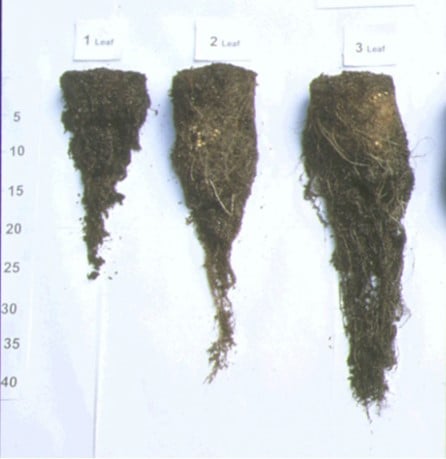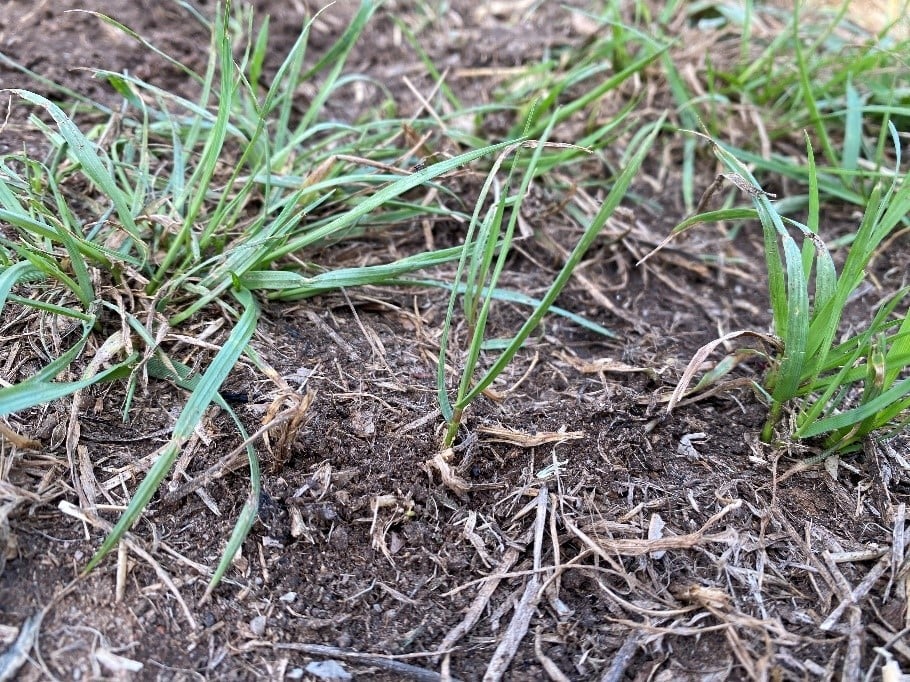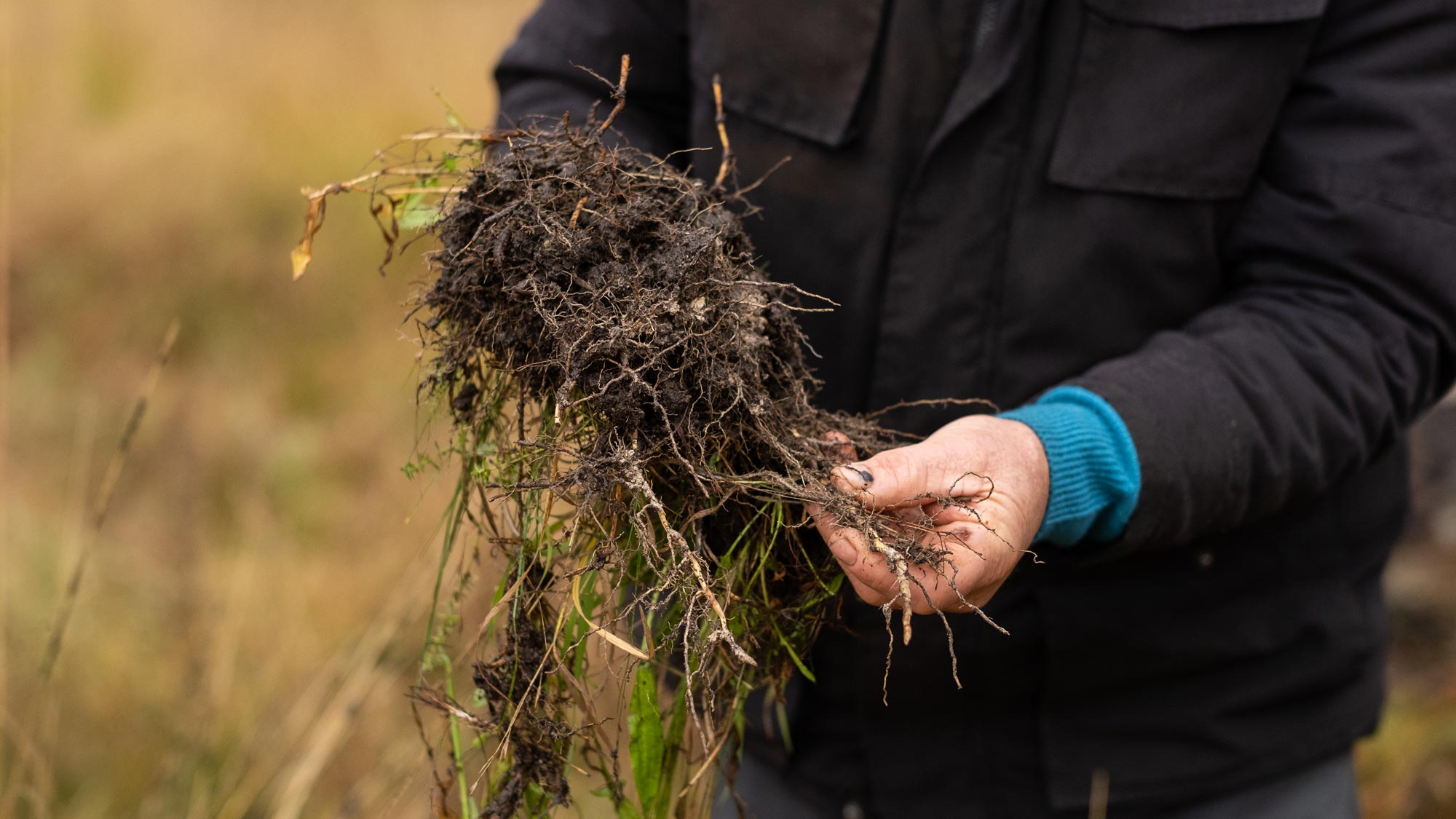Chapter 7.2 Graze to keep desirable species productive and dominant
Background information
The way a pasture is grazed has a major bearing on the species that survive and dominate. Grazing strategies can be developed to maintain the desirable species and optimise their growth rates. Different grazing methods can also be used in more of a tactical, or short-term way to manipulate the composition of degraded or weedy pastures, reducing the need for herbicides or costly renovation.
The way a pasture is grazed also affects how evenly nutrients in dung and urine are distributed and recycled throughout a paddock. Sheep camps can be minimised and maintenance nutrient requirements can be reduced with the appropriate grazing system.
At a glance
- Measure, manage and monitor pasture composition and the stage of regrowth being grazed to determine if you are limiting growth and survival of desirable species.
- Match the grazing needs of the pasture species you want with the grazing tactics you employ.
Introduction
Understanding how the desirable species grow helps you plan a grazing system that will encourage these species to become more dominant. Likewise, knowing the weak spots in a weed’s lifecycle helps you plan grazing tactics to decrease their level in a problem paddock. To aid in persistence, knowing when desirable plants are most vulnerable is key to protecting them. Annual plants are most vulnerable during establishment and flowering (seed set is critical for survival) and perennial plants are most susceptible following dry periods and during reproduction (where they set up for summer survival). For more information about matching plant growth and grazing management, see tool 7.5. For pasture assessment tips, see tool 7.6.
Establishing an effective process of grazing management is about tailoring the principles outlined in this procedure to meet your personal and business goals. There is no ‘right’ grazing management and considerable flexibility is needed to continually re-balance the needs of soil, pasture and animals.
There are three critical actions in this chapter:
- Assess your pastures to determine if your current grazing system is limiting the growth and persistence of desirable species. A number of pasture assessment techniques are described in tool 7.6. For mixed pastures (annual or perennial) based on introduced species, a good composition is: 60% desirable grasses, 30–40% clover and 0–10% weeds. In native grass-based pastures, the optimum clover content is 20% or less.
- Clarify the particular requirements of the species you have in your pasture, especially those that you want to increase or decrease and apply the appropriate grazing management as outlined in tool 7.5. Most pastures are quite a complex mixture of species and individual compromises for each paddock will be required.
- Measure, manage and monitor the impact of your actions on pasture composition. Monitor and record paddock management actions and changes in pasture composition using MLA Pasture Paramedic or MLA Pasture Health Kit (see signposts). Ensure your actions (for example, changed grazing pressure, fertiliser rates, tactical herbicide use, etc.), maintain or increase the proportion of desirable species in the pasture.
Shoots and roots
There is a general tendency among plants to maintain a relationship between root and shoot dry weight. When leaves and stems are removed by grazing, the plant compensates by lowering root growth and returning to a ratio characteristic for the plant. So, in short, continuously grazed grasses or ones maintained at one leaf stage will have small root systems like those on the left of the photo in figure 7.4, while pastures that are grazed and allowed to recover three live leaves look more like the plant on the right-hand side. Plants also have other feedback mechanisms in regulating shoot and root growth involving hormone control, such as the cessation of shoot growth, when roots are under drought stress, low soil temperature or poor aeration from waterlogging or compaction.

Pasture rest periods
All perennial species will be more productive and persistent under grazing that includes rest periods between periods of grazing. Rest periods are necessary to replenish root reserves that have been used to grow shoots and leaves during grazing (this is especially true for perennials such as lucerne) and complete reproductive phases. Growth rates of annual grasses such as annual ryegrass can also be improved by rest but their persistence in a pasture depends on seed-set in spring, rather than survival of individual plants over summer.
Deferred grazing
Deferred grazing is a tactic where livestock are excluded from pasture areas after the break of season to aid grass recovery and maximise germination and establishment of pasture seedlings. Sheep can be concentrated into containment areas, ‘sacrifice’ paddocks or laneways and supplementary fed. Containment areas and sacrifice paddocks should have low erosion risk and you will need to pay extra attention to animal health. The length of deferment should be governed by pasture growth but, to achieve the best outcomes for both the pasture and animal welfare, grazing is best deferred until pasture has achieved:
- Dry sheep – minimum of 500 kg DM/ha
- Ewes in late pregnancy – minimum of 1,000 kg DM/ha for single bearing ewes or 1,200 kg DM/ha for multiple bearing ewes.
- Ewes at the point of lambing or in lactation – minimum of 1,200 kg DM/ha for single bearing ewes or 1,500 kg DM/ha for multiple bearing ewes.
Pasture residues after grazing
The more green material (pasture residue) you leave after grazing the faster the regrowth, as photosynthesis is more quickly restored. During the growing season it is ideal to leave about 1,000 kg DM/ha (green material), but this is also dependent on animal class species and leaf number. If you cannot leave 1,000 kg/ha then place a higher priority on significant rest periods to encourage regrowth following grazing.
Seedling recruitment
Some pastures, such as perennial ryegrass, cocksfoot and prairie grass, recruit from seedlings and this is a tactic that can be used on pastures that have less than desirable plant numbers (figure 7.5). Steps include:
- Removing stock to allow the grasses to set seed in spring;
- Running a big mob of stock in a paddock over summer when the seed is ripe to ensure the seeds are knocked to the ground and dead pasture is eaten off to 1,000–1,500 kg DM/ha by the autumn break; and
- Resting pasture after the autumn break to let new seedlings establish.
Seedling recruitment tactics for phalaris and tall fescue have not proved successful based on poor seedling vigour.
Native grass seedling recruitment occurs using deferred grazing strategies to allow seed set and build up soil seed reserves provided pasture composition consists of at least 5-10% of native grasses.

SIGNPOSTS
WATCH
Do you wish you had pastures filled with sub-clover but instead have pastures that are mainly grass dominant? The difference is often just a few simple management changes. This video steps though the stages of sub-clover growth and what management is required so we can consistently have good clover years.
Read
This section of the MLA website provides a variety of resources to assist you in reducing the weed population and residual seed banks in the soil through a planned control program prior to sowing, and ongoing attention to paddock composition with tactical use of grazing, fertiliser, and chemicals.
When it comes to persistent pastures, selecting the right pastures for your system, sowing in the right place at the right time and managing for the seasons is a strategy for success. There are many considerations when it comes to new and improved pastures – environment, varieties, composition, inputs, soils, establishment, and grazing management. Work through these considerations with resources and tools provided on the MLA Persistent Pastures Hub.
Covers all aspects of sheep farming for meat and wool production throughout temperate Australia, and chapter 2 is titled ‘Pasture growth and management’.
Deferred grazing strategies address several key measures of pasture performance that contribute to the successful rejuvenation of native pastures.
Native perennial grasses can also increase stock performance. Many are summer active and provide quality green fodder in summer on low fertility, acidic soils. While a large proportion of the high rainfall zone of Australia is “native pasture”, farming practices have resulted in much of the area being invaded by annual grasses and weeds with only a small proportion of natives remaining in many paddocks.
This Exchange provides the principles, with evidence from research, for optimising pasture growth, utilisation, environmental management and livestock performance from pastures. Tools and processes are provided to guide planning and monitoring and apply the principles to achieve the best outcomes for the given farm system.
Technical information on soils, fertilisers, soil biology and constraints, specific to NSW.
Information on pasture species and varieties, mixes, establishment and management specific to NSW.
Technical information on soil properties, testing and conditions for Queensland.
Technical information on pasture and land management for Queensland.
Technical information on pastures, including feed budgeting and grazing management in Victoria.
Technical information on soils, including managing problem soils and monitoring in Victoria.
Technical information on soil test results, including key nutrients and soil types specific to Victoria.
Technical information on soil physical, chemical and biological characteristics and managing these for productivity in WA.
Technical information on soil productivity and managing soil constraints specific to WA.
Technical information on managing complex and extensive rangelands ecosystems in WA.
Technical information on managing high rainfall pastures in WA.
Technical information on choosing and managing pastures and pasture and forage pests specific to Tasmania.
Technical information on soils, fertilisers, pasture species and growth rates specific to SA.
Use
A decision-making tool that allows rapid assessment of pasture condition in the medium to high rainfall zones of southern Australia, northern NSW and the WA wheatbelt.
ATTEND
A one-day workshop that gives producers a broad understanding of the environment in which they operate and the core principles behind successfully maintaining grazing land condition and long-term productivity.
Designed for producers to develop a thorough understanding of the grazing land environment in which they operate to strategically manage their grazing business to optimise land condition and productivity in the long-term and begin developing grazing land management plans for their properties.
Producers follow the program for a 12-month pasture production cycle to learn a set of guiding principle to manage pastures confidently regardless of the season, situation or system.






